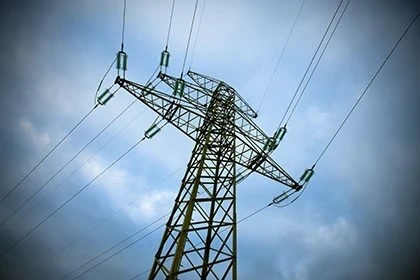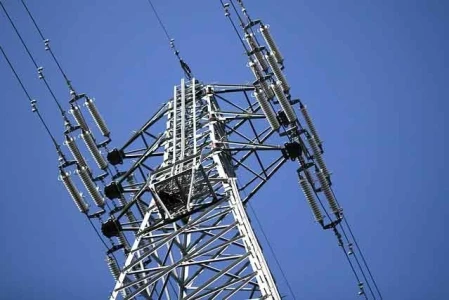Global Warming's Heat Threatens Youth

Global warming is not only a distant concern for the future but a pressing reality today, especially for the younger generations. As climate change intensifies, the planet’s rising temperatures are posing increasingly deadly risks, particularly to the world’s youth. Young people, from infants to teenagers, are disproportionately affected by heat-related illnesses and deaths, as well as the long-term consequences of a warming world. In this article, we will explore how global warming is impacting the health and survival of the world’s youngest and why immediate action is crucial to safeguard their future.
Rising Temperatures and Heat-Related Illnesses
The most immediate impact of global warming on young people is the increasing frequency and intensity of heatwaves. Over the past few decades, the frequency of extreme heat events has risen sharply, with summer temperatures soaring to dangerous levels in many parts of the world. This trend is expected to continue as global temperatures increase due to the emission of greenhouse gases.
Heatwaves, which are prolonged periods of excessively hot weather, are becoming more common in urban areas, where heat is amplified by concrete and buildings. These conditions put immense pressure on the body, particularly for children, who are more vulnerable to the effects of extreme temperatures. Their smaller body size, higher rate of metabolism, and inability to regulate body temperature as efficiently as adults make them more susceptible to heatstroke, dehydration, and other heat-related illnesses.
In 2022, a report from the World Health Organization (WHO) warned that heatwaves caused by climate change could contribute to hundreds of thousands of deaths annually by 2030, with children being at particular risk. Excessive heat can lead to dehydration, heat exhaustion, and heatstroke—conditions that can quickly become fatal without immediate intervention. Infants, toddlers, and young children are especially vulnerable, as they may not be able to communicate their discomfort or seek relief from extreme heat.
Impact on Infant and Child Mortality
The connection between global warming and increased child mortality is becoming more evident. Research has shown that the rise in extreme temperatures is contributing to higher infant mortality rates, particularly in regions that experience high temperatures year-round, such as parts of South Asia, Africa, and the Middle East.
Babies are particularly vulnerable because their bodies are not as capable of regulating temperature as those of older children or adults. In extreme heat, infants can become overheated quickly, leading to serious conditions such as heatstroke, which can be fatal without prompt medical attention. Additionally, global warming exacerbates air pollution, further complicating health problems for young children, whose respiratory systems are still developing.
A 2019 study published in The Lancet found that climate change is directly linked to a rise in deaths from respiratory diseases in children, with rising air temperatures contributing to the worsening of air pollution. Pollutants such as ozone and particulate matter in the air exacerbate conditions like asthma, which is already a leading cause of hospitalization for children in many countries.
Psychological and Developmental Effects
The effects of global warming are not limited to physical health alone. The psychological and developmental toll on children is just as severe. Extreme weather events such as heatwaves, wildfires, and hurricanes, which are becoming more frequent and intense due to climate change, can have a lasting impact on a child’s mental health. Experiencing or witnessing these events can lead to trauma, anxiety, and depression in young people.
A 2020 study from the American Psychological Association found that children who have experienced extreme weather events are more likely to suffer from long-term mental health issues, including post-traumatic stress disorder (PTSD), depression, and anxiety. The fear of future climate events can create a sense of hopelessness among children, who are aware that they may face a less secure and more dangerous future due to climate change.
Moreover, the impact of climate change on food security, displacement, and livelihoods also affects the young. Climate-related disasters can lead to displacement, and many children are forced to live in refugee camps or overcrowded shelters, which further exacerbates their vulnerability to disease and malnutrition.
The Unequal Impact on Low-Income and Vulnerable Populations
While global warming affects everyone, the youngest members of low-income and marginalized communities are particularly at risk. These populations often live in areas that are more prone to extreme weather, have less access to healthcare, and are exposed to higher levels of pollution. In urban areas, children in poorer neighborhoods are more likely to live in homes without proper insulation or air conditioning, leaving them exposed to extreme heat.
For instance, a report by the Children’s Defense Fund highlights that children from low-income families are disproportionately impacted by climate change due to their increased exposure to environmental hazards and limited access to healthcare. In addition, rural communities in developing nations, which are already struggling with inadequate infrastructure and resources, are often left to face the brunt of the impact of climate change on their children.
Urgency of Action
The evidence is clear: global warming is threatening the health and survival of the world’s young. Governments and policymakers must act quickly to reduce greenhouse gas emissions, promote clean energy, and invest in climate resilience strategies, particularly in communities most at risk. Protecting the young from the impacts of climate change is not just a moral imperative but a necessity for ensuring a livable future.
Immediate actions include reducing carbon emissions, improving healthcare infrastructure to handle heat-related illnesses, and increasing public awareness about the dangers of extreme heat. International organizations, such as the United Nations, are already calling for climate action to prevent further harm to future generations, but more must be done to safeguard the health and wellbeing of children today.
In conclusion, the rising temperatures caused by global warming are taking a devastating toll on the world’s young. The impact of heat-related deaths, illness, and psychological trauma cannot be ignored. It is essential that we act now to mitigate climate change and protect the most vulnerable members of our society. Our children’s lives depend on it.









